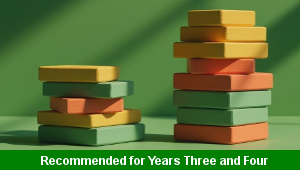Lesson Two – Islamic Prophets

This religious education teaching pack for Key Stage Two gets the children to select and record a set of written instructions that Muslims can follow so that they can observe each of the Five Pillars of Islam.
The class can explain and illustrate how different prophets delivered messages from Allah in Islam to show some of the special ways that Muslims can use to follow their religion.
Download this teaching pack including a lesson plan, classroom activities and an interactive presentation to select and record a set of written instructions that Muslims can follow so that they can observe each of the Five Pillars of Islam
Activities in this teaching pack include display posters to identify and describe the rules and beliefs observed by Muslims as followers of Islam and templates to select and record some of the rules that followers of Islam should observe in their religion.
The interactive presentation gets the children to explore instructions for Muslims to follow so that they can observe each of the Five Pillars of Islam.
This lesson is part of a religious education scheme of work to get the children to explore some of the different traditions, stories, beliefs and practices that Muslims follow and adopt when practising the Islamic religion. There are teaching activities for shared learning, differentiated worksheets to support independent learning and interactive presentations to introduce concepts and key skills.
-

Complaint Letters
Explain and model how to format and structure writing when composing letters of complaint about different issues and scenarios
-

English Spelling Assessment
Assess abilities in spelling different vocabulary words based on the National Curriculum programmes of study for Key Stage Two
-

Subtraction Differences
Explain and model some of the informal and formal written calculations skills that can be used to find the difference between pairs of two and three digit numbers
-

Fraction Equivalence
Investigate, compare and record the values of different non-unit fractions using equivalence between their sets of matching numerators and denominators
